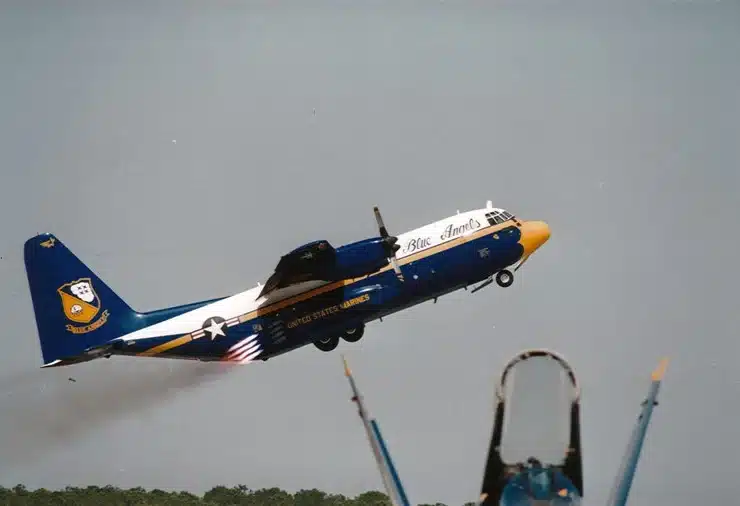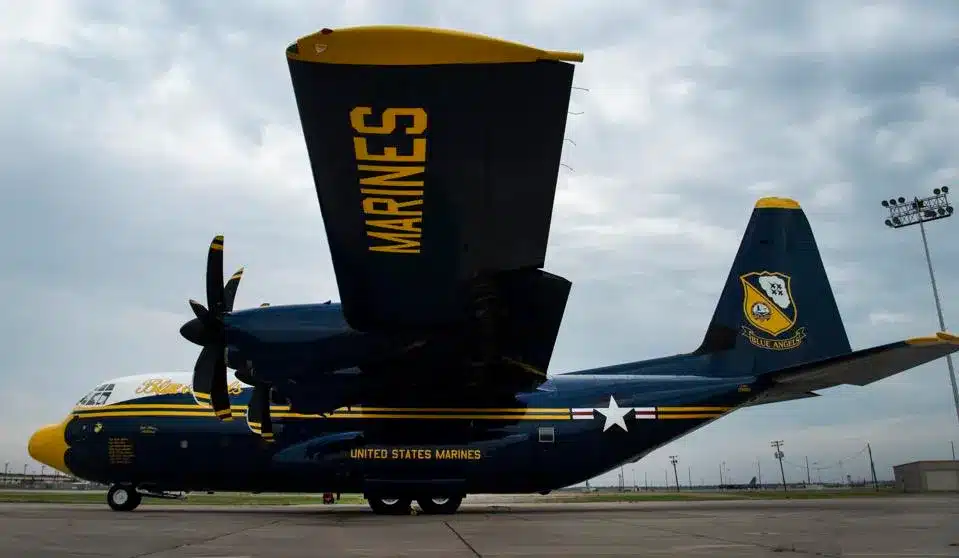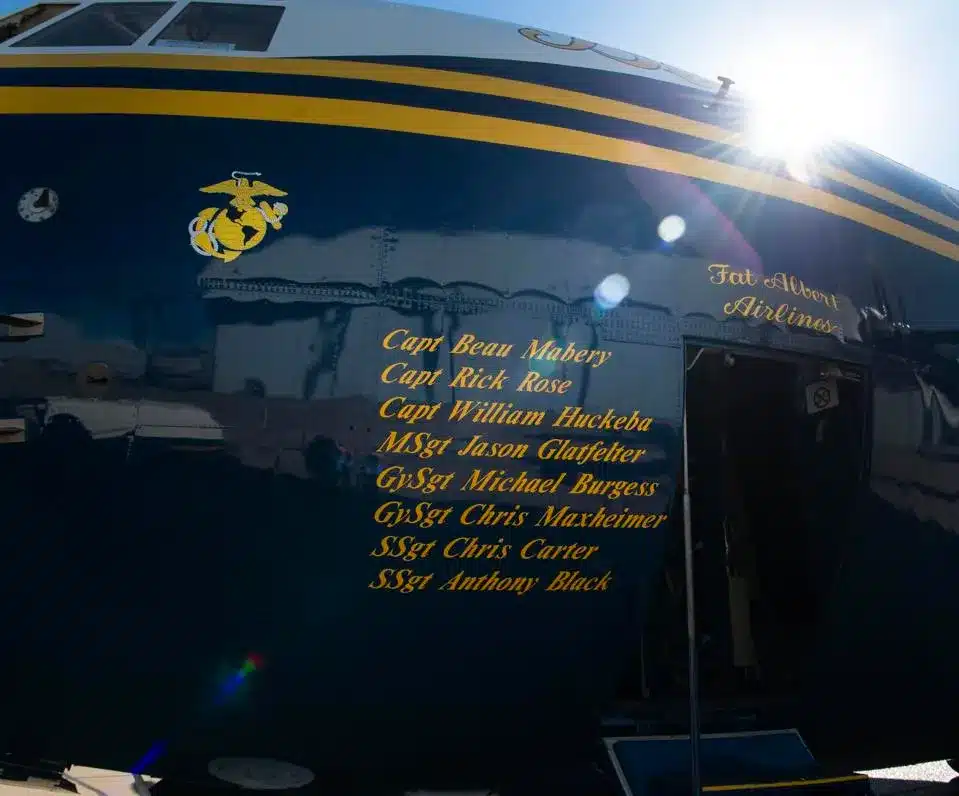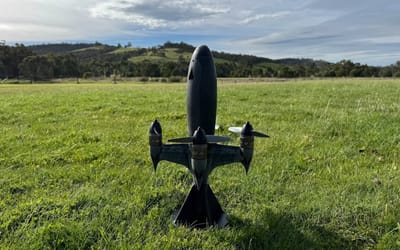Amazing C-130 Hercules ‘Fat Albert’ rocket takeoff looks like an explosion
- Check out this incredible footage of a C-130 Hercules ‘Fat Albert’ rocket takeoff
- Jet Assisted Take Off (JATO) is like nothing you’ve seen on a runway before
- These incredible aircraft were assigned to the U.S. Navy ‘Blue Angels’ flight demonstration team,
Published on Apr 16, 2024 at 4:51 PM (UTC+4)
by Amelia Jean Hershman-Jones
Last updated on Apr 16, 2024 at 9:37 PM (UTC+4)
Edited by
Tom Wood
This footage of the explosive Jet Assisted Take-Off (JATO) of a C-130 Hercules ‘Fat Albert’ is like nothing you’ll see again.
The US Navy’s Blue Angels demonstration squadron used a Marine Corps C-130 dubbed ‘Fat Albert’ to carry its supplies, spare parts, and any other equipment.
To the delight of the gathered crowds, the Lockheed Martin C-130J would open airshows with a literal bang.
READ MORE! Watch the F-22 Raptor rotate through the air while remaining stationary in the sky
It enjoyed its own time during those airshows as it performed aerobatic maneuvers for about 15 minutes ahead of the Blue Angels.
Its nickname of ‘Fat Albert’ is a direct reference to the 1970s children’s cartoon The Adventures of Fat Albert and the Cosby Kids, given to it when it was introduced in 1970.
The Blue Angels retired its former C-130T in 2019 and brought in a newer replacement for the 2021 air show season — the C-130J Super Hercules that we see here.
It has a new paint job, six-bladed propellers, Four Rolls-Royce turbo-prop engines with more than 18,000 pounds of thrust each, an internal heads-up display, and an all-glass cockpit.

Its wingspan is 40 m(132 ft, 7 in) and the length of the aircraft is 30 m (99 ft, 5 in).
With a maximum take-off weight of 7,030 kg (155,000 lbs) and a range of 3,862 km (2,400 miles), it has a maximum speed of 595 km/h (370 mph) at an altitude of 10,668 m (35,000 ft).
Assisted takeoffs can still be used by military aircraft today.
This F-16 fighter jet’s afterburner takeoff is a huge display of power.
Sometimes referred to as Rocket-Assisted Take-Offs (RATO), the concept is simple.
When the aircraft is underpowered, rockets give it some extra thrust – allowing it to get off the ground and get airborne.

The idea dates back to the 1920s and the earliest days of aviation.
German aviators used rockets to help get gliders off the ground before the practice really took off – pun intended – during World War II.
Lacking the modern thrust of jets today, sometimes heavier aircraft like bombers needed a little extra oomph to get up there.
In fact, it was one of the first projects the NASA Jet Propulsion Laboratory worked on for the U.S. Army Air Corps.
The JPL’s first JATO test came in 1941 at March Field, California, US.

‘Zero length’ takeoffs, using short-burst, high-thrust rockets, were experimented with by opposing sides of the United States and the Soviet Union during the Cold War.
The U.S. planned to use it during Operation Credible Sport in 1979 to rescue hostages held by Iran.
Today’s engines pack more thrust than their predecessors.
The result is that JATOs are becoming more and more rare.
But the Air Force’s LC-130 ‘Skibirds’, used to resupply Antarctica’s McMurdo Station, still use JATO to depart the frozen landscape.
Want to see more? The F-22 and F-35A have been captured popping flares in an incredible display of their ability.
And, on a smaller scale, this giant hand-built RC Concorde can loop and roll.
DISCOVER SBX CARS: The global premium car auction platform powered by Supercar Blondie
All Supercar Blondie contributors undergo editorial review and fact-checking to ensure accuracy and authority in automotive journalism. After gaining her BA Hons in French and English at the University of Nottingham, Amelia embarked on a vocational diploma from the National Council for the Training of Journalists (NCTJ). This led to numerous opportunities, from interning at Vogue to being on the small team that launched Women’s Health magazine in the UK, which was named the PPA Consumer magazine of the year for three years running. As Health, Beauty and Fitness editor, Amelia personally received a Johnson & Johnson Award and was shortlisted for both PPA and BSME titles. Since then, Amelia has created content for numerous titles and brands, including the Telegraph, 111 Skin, Waitrose, Red magazine, Stylist, and Elle, as well as being Head of Content at Vitality and Editor in Chief at INLondon magazine. “My superpower is translating technical jargon about the mechanical workings of a supercar into a relatable story you’ll want to share with your friends after you’ve read it.” After joining the SB Media family as a senior journalist in September of 2023, Amelia’s role has evolved to see her heading up the SEO output of the editorial team. From researching the most ‘Google-able’ key terms to producing evergreen content - it’s been a time of hard work, growth, and success for the editorial team and the Supercar Blondie website. “I like to think of myself as a ‘method journalist’. In other words: I live and breathe whatever I am writing about. When writing about fitness, I trained as a personal trainer, and as a beauty editor, I completed an ‘expert’ in scent diploma with the Fragrance Foundation. “During my tenure at Supercar Blondie, however, I did something I never thought possible: I passed my driving test at the age of 36. One day I’d love to train as a mechanic to better understand what happens under the hood, too. “My sweet spot is providing readers with a ‘takeaway’ (read: something new they didn’t know before) after reading every one of my stories. While I don’t claim to be an expert in the automotive world, I know the experts and bodies in the field to rely on to provide our readers with an informative and thought-provoking story every time they visit the site.”




